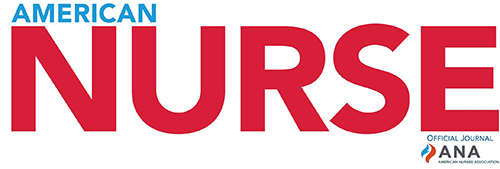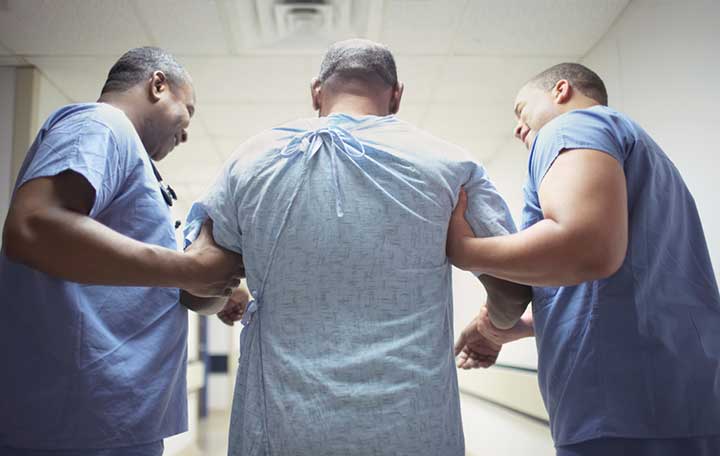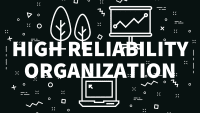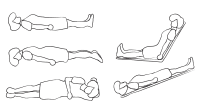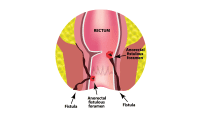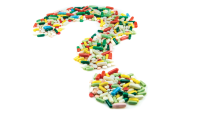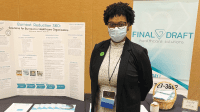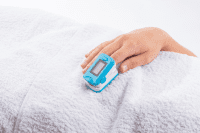Every day, nurses and other healthcare workers suffer debilitating and often career-ending musculoskeletal disorders (MSDs) and other injuries related to manual patient handling. According to ANA’s 2011 Health and Safety Survey:
- 62% of nurses reported “developing a disabling musculoskeletal disorder” as a top health and safety concern.
- 56% of nurses said they have experienced musculoskeletal pain that was made worse by their job.
- 80% of nurses reporting pain from MSDs continued working while experiencing frequent pain.
The most common tasks that lead to injury include lifting, transferring, and repositioning healthcare recipients. Safe Patient Handling and Mobility (SPHM) programs reduce the risk of injury for healthcare workers and healthcare recipients while improving the quality of patient care across the care continuum.
Successful SPHM programs have reduced the incidence of healthcare worker injuries by up to 95%. The use of SPHM technology, especially lifting devices, is critical to the success of these programs. It is also critical for healthcare workers to understand the many benefits of SPHM programs and to overcome perceived barriers.
The following table compares common perceived barriers or “myths” to implementing SPHM and the evidence-based realities:
| Myth | Reality |
| Proper body mechanics (including the use of gait belts) prevent patient handling injuries. | Decades of research shows that “proper” body mechanics are not an effective way to reduce injuries. There is no such thing as safe manual lifting. |
| The majority of the time, manually lifting or transferring healthcare recipients does not result in injury. | Manual lifting results in micro-injuries to the spine. Although the healthcare worker may not feel the effects immediately, cumulative micro-injuries can result in a debilitating injury. |
| Healthcare workers who are physically fit are less likely to be injured. | Research does not support this. Good health and strength may actually put healthcare workers at increased risk because their peers are much more likely to seek their assistance when manually lifting healthcare recipients. |
| Using SPHM technology feels impersonal. | Safety and quality of care are the goals. Healthcare workers can effectively use SPHM technology while incorporating the professional values of respect, dignity, and caring. |
| It is much faster to manually move healthcare recipients than to take the time to get SPHM technology. | If SPHM technology is located conveniently, accessing it will not take more time. It is often more time consuming to round up a team of colleagues to assist with manual lifting than it is to get the SPHM technology. |
| SPHM technology is not affordable | The benefits of SPHM include a rapid return-on investment; savings associated with reduced healthcare worker and healthcare recipient injuries far outweigh the costs. |
SPHM Interprofessional National Standards – Available June 2013
ANA is pleased to announce that its Safe Patient Handling and Mobility (SPHM): Interprofessional National Standards will be available June 2013. The goal of the standards is to establish a uniform, national foundation for SPHM to prevent healthcare worker and healthcare recipient injuries in all care settings. To order the standards, go to www.nursebook.orgwww.anasphm.org

The above myths are summarized in ANA’s new Safe Patient Handling and Mobility brochure. Download and share the brochure at www.anasphm.org
Jaime Murphy Dawson is a senior policy analyst in ANA’s Department for Health, Safety, and Wellness.
Selected References
Howard N. Patient handling: fact vs. fiction. American Nurse Today Special Report: Safe Patient Handling. 2010;5(7):32-34.
Nelson A, Harwood K, Tracey C, Dunn K. Myths and facts about safe patient handling in rehabilitation. Rehabil Nurs. 2008;33(1):10-17.
Veterans Health Administration and Department of Defense. Patient Care Ergonomics Resource Guide: Safe Patient Handling and Movement, developed by Patient Safety Center of Inquiry, Tampa, FL. October 2001.
Walters T. When is it safe to manually lift a patient? Am J Nurs. 2007;107(8):53-57.
